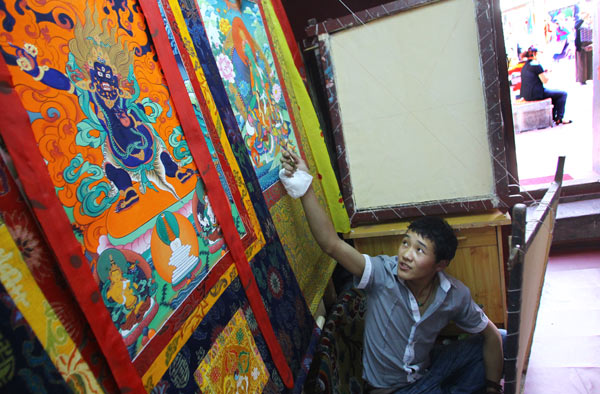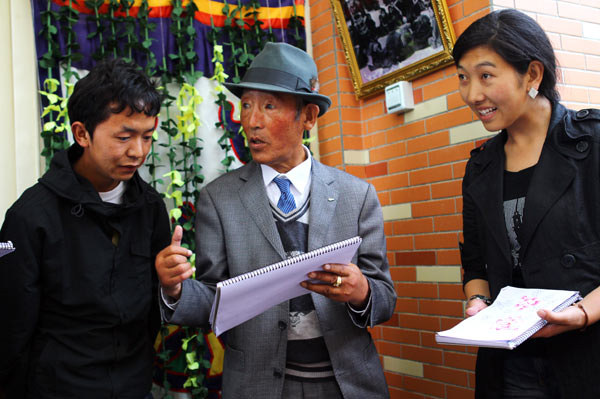China Face
Thangka craftsmen re-create religious icons
Updated: 2011-08-21 09:03
By Cui Jia (China Daily)
A junior apprentice receives an allowance of about 800 yuan each month, while Yuton's friends who work in the factories may be taking home as much as 3,000 yuan.
"They often ask me to give up and join them because I earn so little, but I always tell them that not everything can be measured by money," Yuton says. "I feel happy and fulfilled when I paint. It's a great feeling that I cannot explain."
A thangka painted on cotton or silk can fetch anything from 1,000 yuan to tens of thousands depending on the size and the quality.
During the peak season in summer when worshippers and visitors flock to Lhasa, Yuton's workshop may earn between 15,000 to 20,000 yuan a day.
"For local Tibetans, they "invite" the thangkas to their home for worship, but tourists buy them as art," says Gyasto.
This traditional art is receiving some serious academic attention as well.
In 2004, the University of Tibet received its first eight undergraduates studying the art of thangka as a Bachelor's program. The course is still in progress.
"A university cannot produce thangka masters because what they learn in there is just the theory, and four years is not enough to perfect painting skills," says Danpa Rabtan, the 70-year-old thangka master who also lectures at the university.
"The real masters are outside the university."
 |
|
A junior thangka apprentice. [Photo by Zou Hong / China Daily] |
Raptan, who began thangka painting when he was 14, said the younger the artist starts, the better he learns. Teaching methods have also evolved through the years.
"When I was an apprentice I would be beaten if I did not concentrate on my work but now, you cannot do that," he says.
"Apprentices these days are less conscientious and prefer an easier life of leisure rather than hard work, compared to those in the 1980s who truly tasted hardships."
Raptan is also the author of the book Tibetan Painting, and he has a workshop with apprentices ranging from 12 years old to 28.
He has already taught more than 100 apprentices so far, but feels only less than 50 have "graduated" while only less than 20 were "outstanding".
The final test for Raptan's apprentices is to complete a thangka all on their own - a process that may take more than 6 months.
He keeps photographs of thangkas that have met his meticulous demands, and gives the originals to the apprentices as his gifts.
"The relationship between a teacher and a student is more like a doctor and a patient," Raptan says. "Students are like containers into which I would like to pour butter tea, as long as they are not leaking or stained."
He broke with tradition recently by accepting his first female thangka apprentice. She is probably also the first in Tibet because women were not allowed to become thangka artists. But Raptan believes things are different now.
"Women and men are equal now. Although thangka painting is a traditional art, it also needs to keep pace with the modern world."
You can contact the writer at cuijia@chinadaily.com.cn.

Specials

Biden Visits China
US Vice-President Joe Biden visits China August 17-22.

Star journalist leaves legacy
Li Xing, China Daily's assistant editor-in-chief and veteran columnist, died of a cerebral hemorrhage on Aug 7 in Washington DC, US.

Hot pots
Tea-making treasures catch the fancy of connoisseurs as record prices brew up interest
